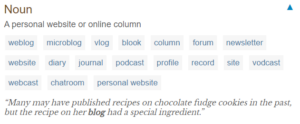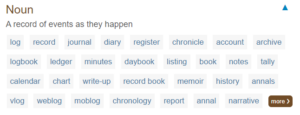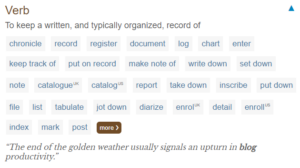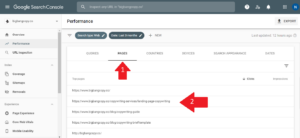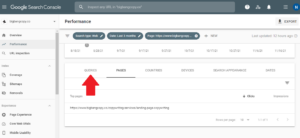4 Online Tools to Help you Break Bad Writing Habits
Look, copywriting isn’t easy. And no matter how good a writer you are, you should always be looking for ways to improve. But sometimes it can be difficult to pinpoint exactly where and how you need to improve. Think of it like a golf swing. It’s all well and good playing golf every week, hitting a few balls and generally feeling good with how you’re playing. But if nobody tells you where you’re going wrong, you might just be practising a bad swing and reinforcing bad writing habits. So how do we break out of any bad writing habit we might’ve slipped into?
Personally, I use these five online tools to keep my writing in check. They help me with every stage of the writing process – from planning, to spell checking, to analysing it after publication. I’ve been a professional writer for more than 10 years, and some of these tools have been by my side the whole time. I hope you benefit from them as much as I have.
Table of Contents
1. WordHippo
What is WordHippo?
WordHippo is your one-stop-shop for all things writing. It has a host of features that can help you find alternative words, examples of words in sentences, rhyming couplets and much more.
Which bad writing habit does it break?
Overusing the same words.
Repeating the same words takes away from the quality of your copy. You probably don’t even notice you’re doing it, either. To help you get around it, WordHippo’s thesaurus tool gives you hundreds of synonyms for each word. It really helps to keep your content fresh, interesting and coherent.
But the unique part of this tool is that each word is broken down into different categories. So, for example, let’s try out the word ‘blog’. Firstly, you can see that WordHippo provides a definition of the word, an example of its usage and a list of synonyms.
WordHippo does the same thing for when the word is used in a slightly different context – in this case, when ‘blog’ refers to a record of events as they happen, instead of a personal website or online column.
But we know that ‘blog’ can also be used as a verb. If we scroll down, we can see that WordHippo includes this usage of the word, along with a list of synonyms. Because ‘blog’ in this sense is a verb, it means it has a different list of synonyms.
As you can see, WordHippo is a great way of expanding your vocabulary and making your writing more varied. And whilst you shouldn’t lean too heavily on a thesaurus, intelligent use of this tool can really help to improve your writing.
2. WordCounter
What is WordCounter?
This website may be called WordCounter, but it’s much more than a word counting tool. It’s also a really useful tool to analyse your writing in detail. Besides simply counting the words of your blog, WordCounter has several more useful features for writers.
Which bad habit does it help break?
Writing content that’s difficult to read.
Writing for the web is very different to writing in a newspaper, for instance, and simplicity is king. Simplify your content and it’s more likely to be read by more people. Nobody ever complained about a blog being too easy to read, after all. WordCounter can help you simplify your writing without sacrificing on quality.
To assess the complexity of your content, WordCounter shows you the average sentence length and average word length. It also shows you the time it takes to read your content on the screen and the time it takes to read your content out loud.
All of these measures can help you get an idea of how easy your content is to digest. Using too many long sentences makes your writing difficult to read, whilst long words may not be understood by everyone. This hurts the readability of your copy and could negatively affect its search ranking, too.
3. Google Analytics
What is Google Analytics?
Oh, come on.
Which bad habit will it help me break?
Writing for yourself and not the reader.
Once your content has been published, it’s easy to scan through the analytics and assess how it’s doing based on traffic alone. But that’s a big mistake. Traffic only tells you part of the story. Making the most of Google Analytics can help you write content that resonates with the reader; not just you.
Take a look through your published posts in Analytics. Instead of looking at page views, focus instead on ‘Average Time on Page.’ You can use this metric to get an idea of how well your readers are engaging with your content, and how much they’re reading of it. If there’s a discrepancy between the time it takes to read your post, and the time users actually spend reading it, it may suggest the article isn’t meeting their expectations.
But how long is a good amount of time? To assess that, let’s go back to our friend WordCounter. If you remember, WordCounter displays the average time it takes someone to read your blog. Compare that figure with the ‘average time on page’ metric in Google Analytics, and you can start to see how much of your blog people actually tend to read.
If your users aren’t reading your content all the way through, ask yourself why. Does it answer the question the user is asking? Is it grammatically correct and easy to read? Basically: has it been written with them in mind?
If not, it’s time to rewrite.
4. Google Search Console
What is Search Console?
Search Console is another tool that you’re probably already aware of – but you may not know that it’s a really great way to improve your writing skills.
Which bad habit will it help me break?
Writing half-assed headlines.
Search Console can be a powerful tool for writers – if used correctly. Let’s look at how you can use it to improve the quality of your headlines.
From the main dashboard of Search Console, click ‘Performance’. It’s located in the left-hand panel.
From there, click ‘Pages’, then the blog or webpage that you want to analyse.
Then, click ‘Queries’ again.
Now you’ll see a list of all the search terms your audience has used to find that blog.
Take a good look at these search terms. You should pay particular attention to the search terms with a lot of impressions, but few clicks. In other words, the blogs with a low clickthrough rate.
A low CTR suggests your content is being shown to users by Google, but they’re clicking on other websites instead. Consider why that is. There’s a good chance it’s because your headlines aren’t enticing enough. After all, at this point, Google users are just being offered a bunch of headlines and meta descriptions. And that’s the only way they can decide which result to click on.
Now, the good news is that you can use this information to optimise your headlines. Google the search terms you can see on Search Console. Take a look at the headlines of the top results. Why are users clicking on their content instead of yours? What are they promising that you’re not? Try performing this analysis for a few different pages to see if there are any trends that run throughout the top-performing headlines.
Bad Writing Habits are Easy to Slip into but Hard to Break out of
That’s because it’s difficult to get feedback we need to become aware of our bad habits and then break out of them. Whilst client feedback can be useful, it’s not going to give us the detailed insights we need to really improve.
That’s why I enjoy using these tools so much. They can not only tell you more about the quality of your writing but can also be used to better understand how users read and engage with your content. Because after all, the reader will be the ultimate judge of your copy. So let them guide the way towards better copy and better writing habits.
Continue Reading: 8 Copywriting Podcasts to Improve Your Writing
About the Author
Nick Harland is the founder of Big Bang Copy, a copywriting agency that does things differently. He writes about all things copywriting – for anyone that cares to listen!


